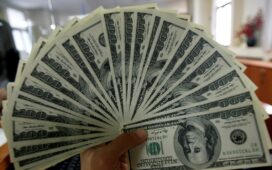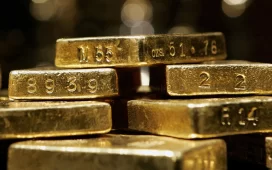- Gold Price rises to around $3,375 in Monday’s early Asian session, up 1.43% on the day.
- Significant uncertainty over Trump’s tariffs on imports into the US supports the Gold price.
- The Fed’s hawkish remarks might cap the upside for the XAU/USD.
The Gold Price (XAU/USD) drifts higher to a fresh record high near $3,375 during the early Asian session on Monday after facing some profit-taking due to the long weekend. Uncertainty about US President Donald Trump’s tariff policies and persistent geopolitical tensions continue to underpin the precious metal.
Investors have rushed to safe-haven assets like Gold due to rising uncertainty about tariffs and their impact on the economy, resulting in a more than 25% increase in the yellow metal prices since January. “The case for adding gold allocations has become more compelling than ever in this environment of escalating tariff uncertainty, weaker growth, higher inflation, geopolitical risks & diversification away from US assets & the US$,” said UBS analysts.
Additionally, central bankers have been adding gold to their portfolios. China, the world’s largest gold consumer, China added gold to its holdings for the fifth consecutive month, boosting its demand for the precious metal as a safe haven asset in the face of mounting global trade and geopolitical tensions.
On the other hand, the Federal Reserve (Fed) Chair Jerome Powell turned hawkish last week, reducing the likelihood of a Fed rate reduction in June. Meanwhile, San Francisco Fed President Mary Daly said on Friday that the US economy is in a good place, though some sectors are slowing down. This, in turn, could lift the Greenback and weigh on the USD-denominated commodity price.
Gold FAQs
Gold has played a key role in human’s history as it has been widely used as a store of value and medium of exchange. Currently, apart from its shine and usage for jewelry, the precious metal is widely seen as a safe-haven asset, meaning that it is considered a good investment during turbulent times. Gold is also widely seen as a hedge against inflation and against depreciating currencies as it doesn’t rely on any specific issuer or government.
Central banks are the biggest Gold holders. In their aim to support their currencies in turbulent times, central banks tend to diversify their reserves and buy Gold to improve the perceived strength of the economy and the currency. High Gold reserves can be a source of trust for a country’s solvency. Central banks added 1,136 tonnes of Gold worth around $70 billion to their reserves in 2022, according to data from the World Gold Council. This is the highest yearly purchase since records began. Central banks from emerging economies such as China, India and Turkey are quickly increasing their Gold reserves.
Gold has an inverse correlation with the US Dollar and US Treasuries, which are both major reserve and safe-haven assets. When the Dollar depreciates, Gold tends to rise, enabling investors and central banks to diversify their assets in turbulent times. Gold is also inversely correlated with risk assets. A rally in the stock market tends to weaken Gold price, while sell-offs in riskier markets tend to favor the precious metal.
The price can move due to a wide range of factors. Geopolitical instability or fears of a deep recession can quickly make Gold price escalate due to its safe-haven status. As a yield-less asset, Gold tends to rise with lower interest rates, while higher cost of money usually weighs down on the yellow metal. Still, most moves depend on how the US Dollar (USD) behaves as the asset is priced in dollars (XAU/USD). A strong Dollar tends to keep the price of Gold controlled, whereas a weaker Dollar is likely to push Gold prices up.





